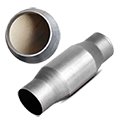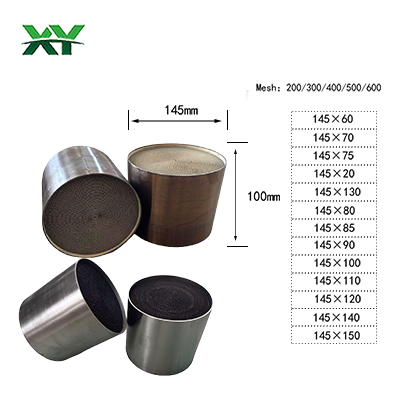Classification of Common Precious Metal Catalysts:
1.1 Heterogeneous Catalysis
Heterogeneous catalysis accounts for four-fifths of all catalytic reactions. Most heterogeneous catalysts are insoluble solids, and most are carrier-supported precious metals, such as Pt-Rh/Al2O3 and Pt-Pd/Al2O3.
1.2 Homogeneous Catalysis
These are typically soluble compounds (salts or complexes), such as palladium chloride, rhodium chloride, and triphenylphosphine carbonyl rhodium.
1.3 Others
Based on the shape of the carrier, supported catalysts can be categorized as spherical, microparticle, honeycomb, and columnar. Catalysts can also be classified based on the primary active metal in the catalyst. Commonly used catalysts include platinum, palladium, and silver.
Mechanism of Metal Catalysts
1. Adsorption of Metal Catalysts
Adsorption is a crucial step in heterogeneous catalysis. Transition metals can adsorb gases such as oxygen. Their strong chemical adsorption capacity is related to the properties of transition metals. This is because they possess vacant d orbitals or unpaired d electrons in their outermost electron shells, making them prone to forming chemical bonds with gas molecules. Their low activation energy allows them to adsorb most gases. Most importantly, their d orbitals are either half-filled or fully filled, making them relatively stable and less likely to form chemical bonds with gas molecules.
In a catalytic reaction, a metal catalyst first adsorbs one or more reactant molecules, enabling them to react chemically on the metal surface. The activity of a metal catalyst for a particular reaction is related to the relative stability of the intermediates formed after the reactants adsorb on the catalyst surface.
Generally speaking, molecules in a state of moderate chemical adsorption exhibit the greatest catalytic activity. Excessively weak adsorption prevents the chemical bonds of reactant molecules from relaxing or breaking, making them less likely to participate in the reaction. Excessively strong adsorption, on the other hand, results in the formation of stable intermediate compounds that cover the catalyst surface, hindering desorption.
2. Metal-Support Interactions
The two main factors inducing metal-support interactions are electronic interactions and chemical interactions. Different metal catalyst systems have different influences on the metal-substrate interaction, and the dominant factor depends primarily on the properties of the metal catalyst and the reaction conditions.
Electronic interactions refer to the redistribution of charge at the metal/support interface when the metal and support are in contact, maintaining minimum energy and solid potential continuity. This effect can be categorized into local charge transfer and long-range charge transfer. Local charge transfer is primarily driven by the mutual polarization of electron orbitals caused by weak van der Waals forces.




























